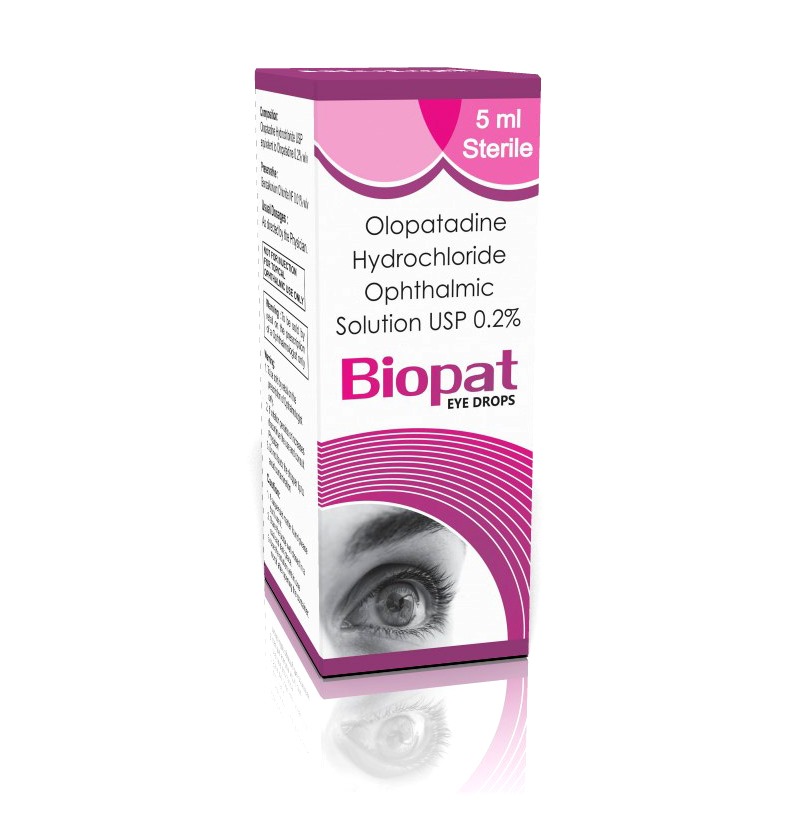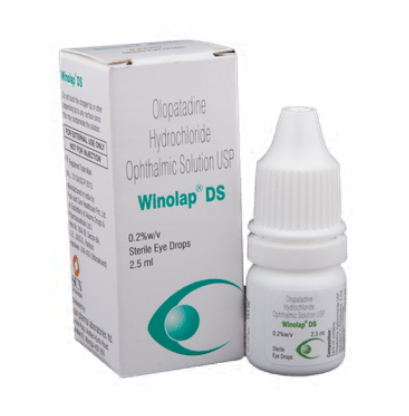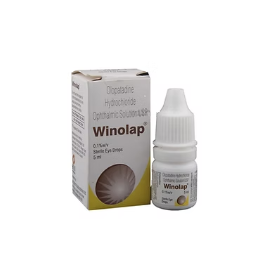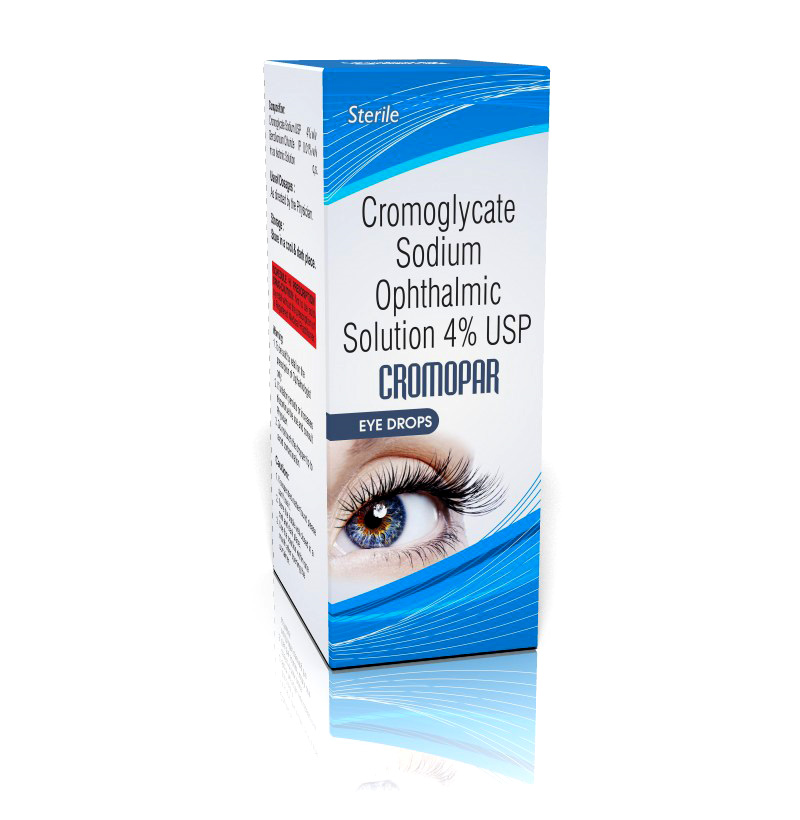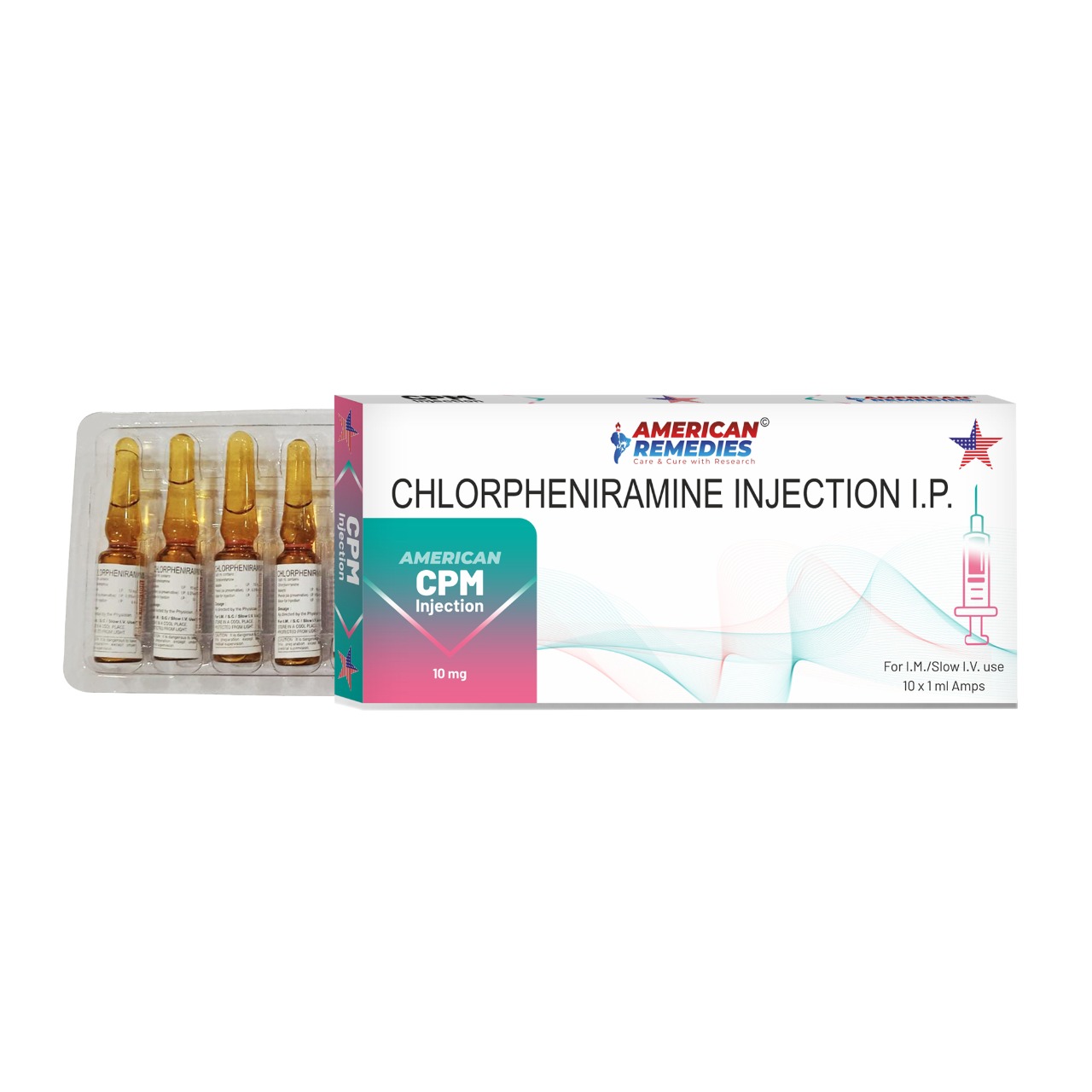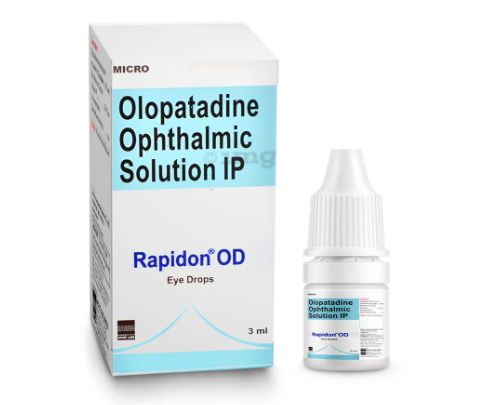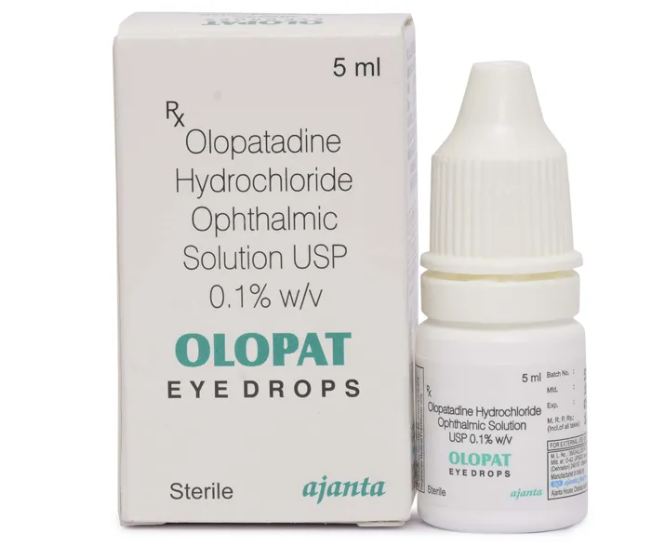Eye Care
Olopat 0.1% w/v Eye Drops 5 ml contains an active ingredient, Olopatadine, an antibiotic which is used for the treatment of Allergic Reactions/Disorders. You can buy it from all the leading pharmacy Stores, drugstores, and medical supply stores but can be given on doctor’s prescription only.
Dosage Form:
Eye Drops
Manufacturer:
Ajanta Pharma (India) is one of the leading pharmaceutical companies which manufacture Olopat 0.1% w/v Eye Drops.
Strength:
Olopat 0.1% w/v Eye Drops contains an active ingredient, Olopatadine 0.1% w/v in a 5 ml bottle which may be available in the various strengths and substitutes at all the leading pharmacy, drugstores, and medical supply stores.
What Are The Uses Of The Olopat 0.1% w/v Eye Drop 5 Ml (Olopatadine):
Olopatadine is used in:
Allergic Reactions of Eye/Ear
Olopatadine in other dosage forms is used in the treatment of Allergic disorders of the body.
How Olopat 0.1% w/v Eye Drop 5 Ml (Olopatadine) Works:
Olopat 0.1% w/v Eye Drop 5 ml is consisting of Olopatadine, an antihistaminic drug which basically blocks the action of certain chemical messengers (histamine) that are responsible for inflammation, congestion, itching, and other allergic reactions.
Before You Use Olopat 0.1% w/v Eye Drop 5 Ml (Olopatadine):
Make sure that:
You are not allergic to Olopatadine
You are not using contact lenses
Your doctor knows about your Surgeries, Diseases, Pre-existing disease and Medications, Food Habits, Supplements, etc.)
What Should You Avoid While Taking Olopat 0.1% w/v Eye Drop 5 Ml (Olopatadine):
You should avoid alcohol consumption
You should strictly avoid taking Medicines without prescriptions
You should avoid multiple medicines for eye at the same time.
When Not To Use Olopat 0.1% w/v Eye Drop 5 Ml (Olopatadine):
You should avoid Olopatadine if you:
Have ever noticed any Allergy/Hypersensitivity to it
Have increased pressure inside the eyes, redness, swelling, itching or inflammation in eyes
Have gone through any Eye Surgery
Are Pregnant/Conceiving
You should always consult your doctor for suitable and effective treatment
Tell Your Doctor If You:
Are Allergic to it
Have any Inflammation or any pressure problem inside the eye.
Are taking other medicines for eye only
Have redness, swelling, itching as a side effect which may get worse by time
Have gone through any Eye Surgery
Are Pregnant/Breastfeeding
Are having other Diseases, Drugs or Therapies
Dosage:
Olopat 0.1% w/v Eye Drop 5 Ml contains an active ingredient, Olopatadine, which is used in the treatment of Eye Infection and should be given on prescription. You should always consult your doctor for the frequency and dose as age and severity of the disease differ from person to person. Olopatadine is also available in tablet or capsule forms which can be given by your doctor for the treatment of bacterial infections in other body parts
Patients are advised to take Olopat 0.1% w/v Eye Drop 5 ml at a fixed time, preferably in morning and evening time or prescribed by your doctor. It can be used for Ear Infections also.
How Much Of The Olopat 0.1% w/v Eye Drop 5 Ml (Olopatadine) to Be Used:
Patients are always advised to follow their doctor’s prescriptions and instructions to take Olopatadine. It is better to take one drop each eye at one time.
How To Take The Olopat 0.1% w/v Eye Drop 5 Ml (Olopatadine):
Olopat 0.1% w/v Eye Drop 5 ml should be taken at a fixed time once or twice a day as directed by your doctor. You may take it by holding the dropper close to the eye/ear without touching it. Then, gently squeeze the dropper and place the medicine inside the lower eyelid/ear. Wipe off the extra Liquid with a Clean/ Tissue.
For How Long Should You Continue Using Olopat 0.1% w/v Eye Drop 5 Ml (Olopatadine)
You are always advised to use the eye drops as prescribed by your doctor. You are not advised to take it in a large amount or for a longer time than recommended but you are always advised to complete the course of treatment.
Overdose:
Rinse your eyes thoroughly in case of any irritation or severe symptom of inflammation and contact your doctor immediately if you are suspecting an Overdose.
Missed Dose:
A missed dose of the eye drop should be taken as soon as you remember. Skip the dose you missed if it is the time for the next dose. Do not take multiple doses next time to make up the missed dose.
What Are The Side Effects Of The Olopat 0.1% w/v Eye Drop 5 Ml (Olopatadine):
Headache
Photosensitivity
Blurred Vision
Nausea
Hallucination
Olopatadine in other dosage forms can cause more side effects not listed here.
What Are The Common Drug Interactions:
Few medicines may interact with Olopat 0.1% w/v which can produce some adverse effects or cause your drug not to work properly. You should always tell your doctor if you are on Vitamins, other Drugs or Herbal Supplements so that a well-planned medication can be followed. Tell your doctor about the eye drops you are using other then Olopat 0.1% w/v.
Send
Message
